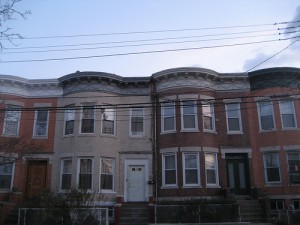Due largely to the forty one billion dollar affordable housing plan proposed by New York City Mayor de Blasio, East New York is supposed to be one of the most affordable neighborhoods to rent or buy. It is scheduled as the first of fifteen proposed sites to be developed specifically with creating affordable housing in mind. The plan promises to build or maintain two hundred thousand units of cheap housing throughout the city. However, according to a recent article in the Gothamist, the price of land in this previously thought of as affordable neighborhood is on the rise, making affordable housing more and more difficult to build and acquire.
The spike in land prices is being felt in all aspects of building and buying in the neighborhood. A year ago, an apartment in East New York sold for one hundred and forty three dollars per square foot. Now, that same figure has increased to one hundred and fifty five dollars per square foot. In the first half of 2013, real estate transactions in the area totaled two point seven million dollars; the same stretch of time in 2014 brought that figure to forty two million dollars.
Essentially, the city’s strategy for coaxing private developers into building affordable housing simply can’t work, if inflated land prices makes it impossible for said developers to turn any form of profit. Private developers tend to build with the higher end in mind; eighty percent of developers build for renters willing to pay over six hundred and thirty dollars. However, rents in East New York typically range from three hundred and seventy five dollars to six hundred and twenty five dollars a month. In essence, the numbers simply don’t work—private developers don’t see the value in following the mandate for cheaper housing. Therefore, the article questions who really is benefiting from the supposed affordable housing mandate.
As a result, in July the city commissioned a study to examine what the real estate market can support—how much affordability city officials can ask from private developers. Recently, Wiley Norvell, a spokesman from the Mayor’s Office, released some findings from the very limited study, which looked at only five meager sales from the neighborhood. However, the findings were relatively positive, as Norvell declared that the difference lies between land prices and rents; this distinction is not a large matter to Norvell, who claims that the study indicates that consumer’s buy smaller dwellings with the intention of building up—adding floors to the existing structure, to make the parcel more valuable. This does not mean that the price of one-bedroom apartments have increased, Norvell disclaims. In fact, the new zoning envelope will prohibit any building without significant promise of affordable housing. The result will be an increase in affordable housing.
